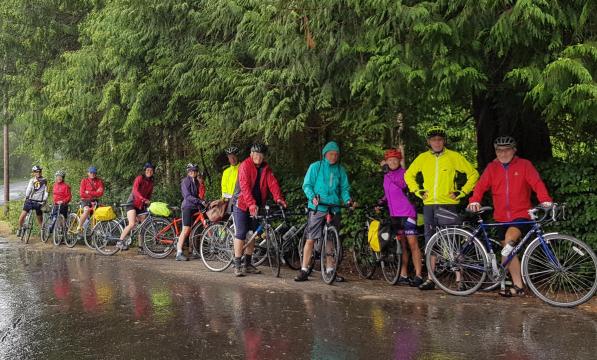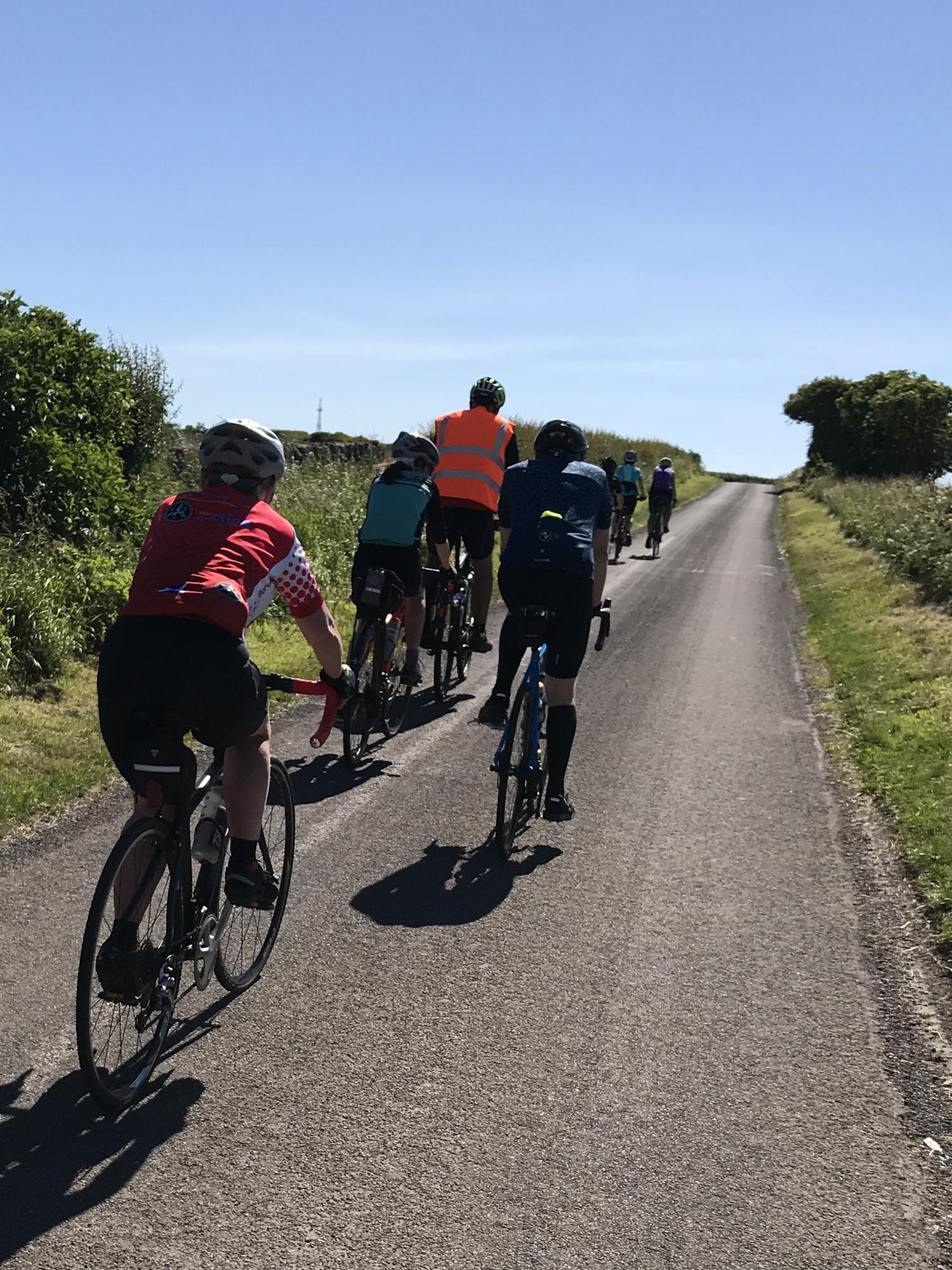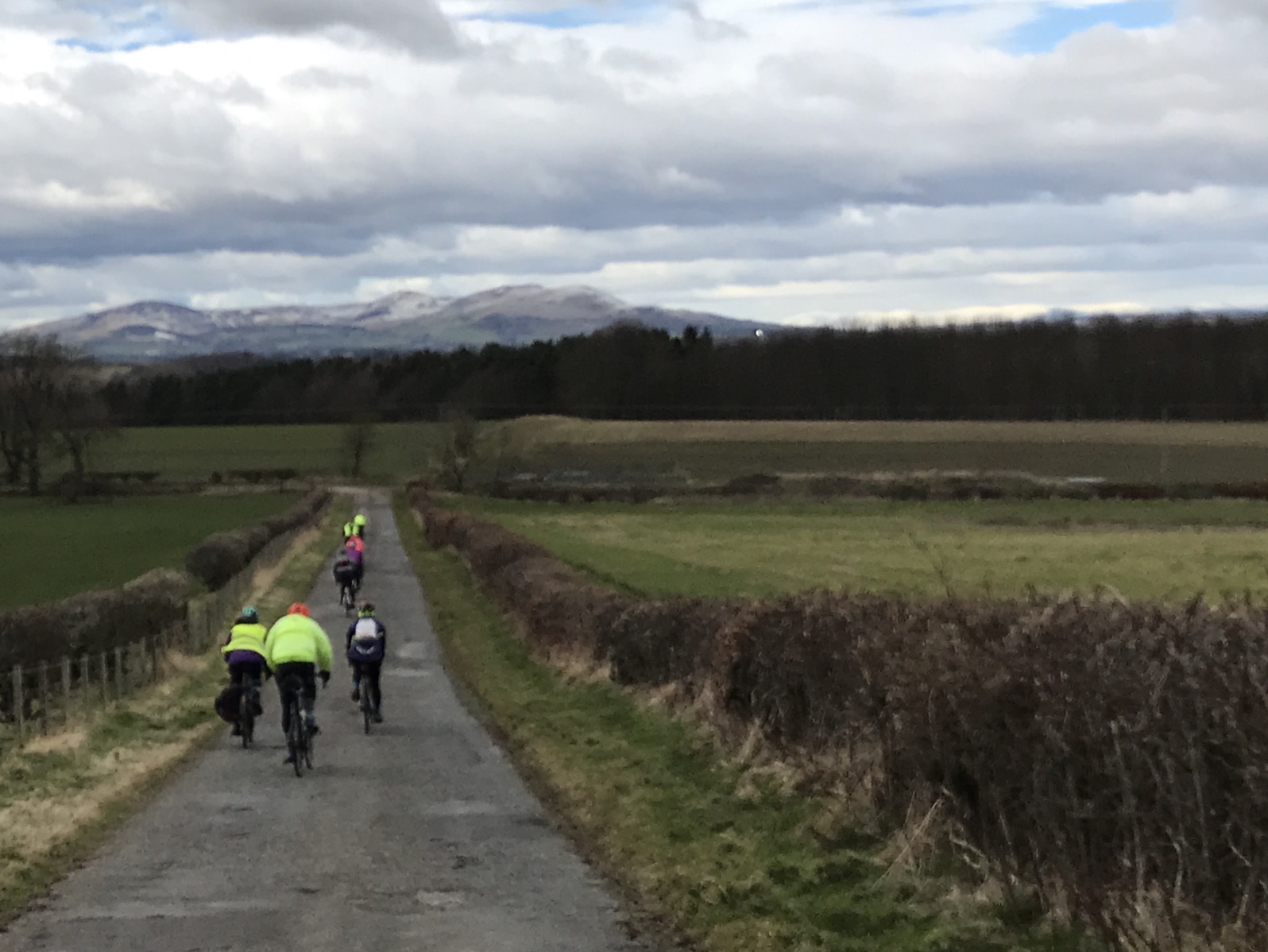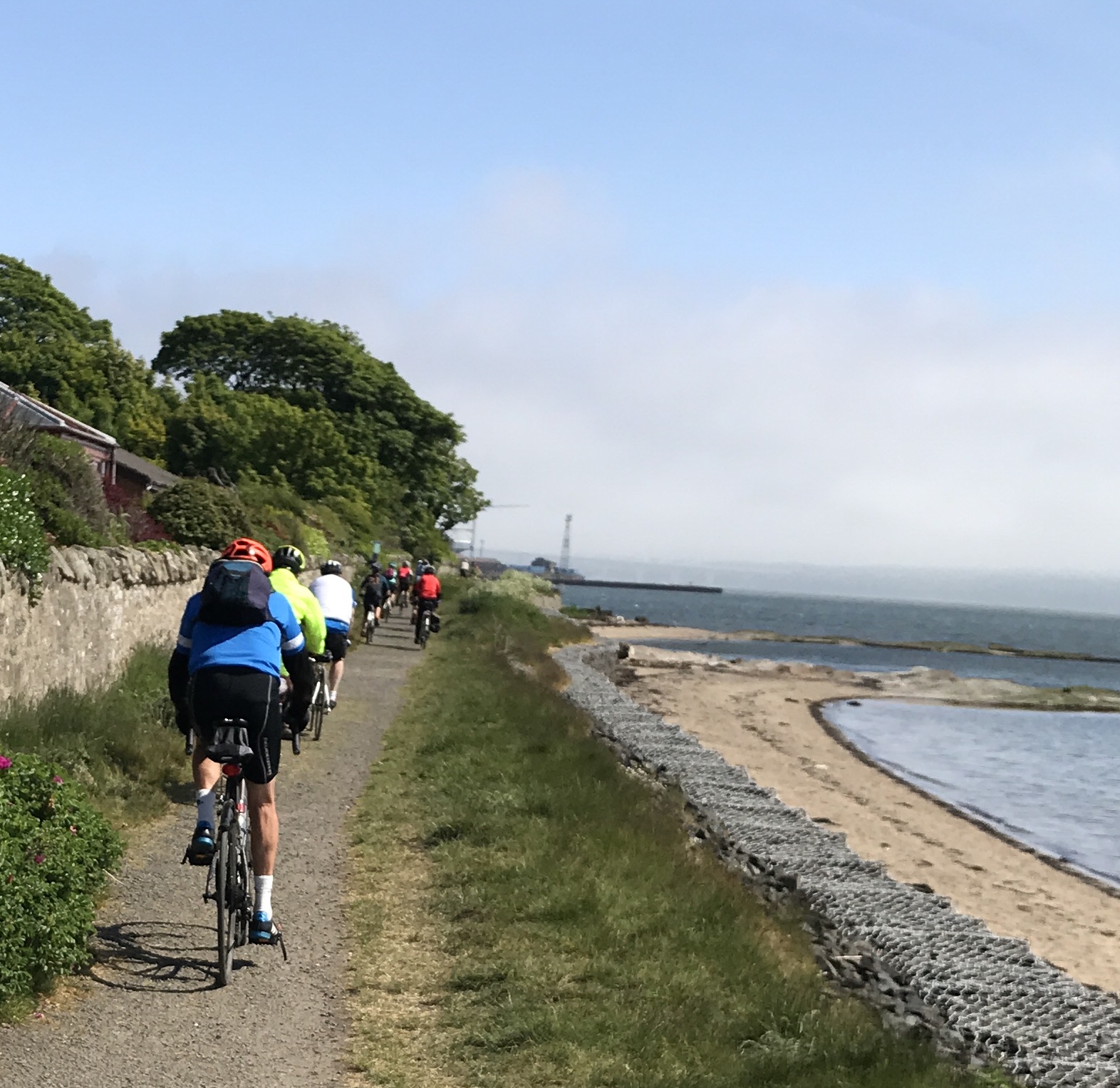Help for Potential New Ride Leaders and Mentors-

Thinking of volunteering as a Ride Leader with CTC Edinburgh, Lothians and Borders? – read on;
Being a ride leader is enjoyable and rewarding. If you are a regular cyclist and a member of our group why not consider becoming a ride leader or speak to other ride leaders to get more information? The club is always pleased to have new volunteers and there is no commitment to a set number of rides. If you can’t manage your set day, it is usually straightforward to swap with another leader.
Cycling UK provide a Ride Leaders Toolkit, which provides a wide range of information to support numerous formats of ride.
In addition they have a comprehensive 39-page handbook for ride leaders which can be downloaded:
Ride-Leaders-Standards-Handbook-v2 (ver 2 2023)
There is also information on Ride and Event Organiser Insurance here:
https://www.cyclinguk.org/insurance/event-organiser
In addition we have created a "Ride Leader Framework" document, collated from the numerous resources available on ride leading (follow link & also included at the bottom of this page), which identifies all the principle points a leader should consider during the 4 phases of: planning, preparing, leading & reflecting on the ride. A useful aide-memoire.
Some tips on how to lead a ride with CTC Edinburgh, Lothians and Borders.
The club has winter (Sunday and Wednesday) and a summer (Sunday, Tuesday and Wednesday) programmes which are each collated by separate rides organisers. They tend to allocate a start point but the route and destination are at the leaders’ discretion. They will ask for leaders for each of the rides usually twice a year in February/March for the summer programme and in August/September for the winter programme.
The things to be considered by the ride leader are;
- Start point and time
- Route and distance including Lunch and café stops and end point
- Pre ride briefing
- On the ride
Start Point and time is usually fixed by each of the rides' organisers – however leaders choose which dates they are happy to lead
Route and distance – Again some of this is suggested i.e. distance Sunday 40 miles, Tuesday 20 miles and Wednesday 50 to 80miles. The route and destination are up the individual ride leader
The leader plans a suitable route taking into account the Runs Information on the website and the time of year. Rides are listed on the Rides-List.
Sunday rides generally have a café stop for lunch (best to give café advance notice); Wednesday rides in winter use a village hall and picnic al fresco in summer; whilst Tuesday rides generally end in a pub/café.
It is advisable to recce the route if you are unfamiliar with the roads and having done so you can use one of the electronic planning devices to record and share your route i.e. Mapometer, Strava, Garmin or any other online tool. Ask around and there will be someone willing to help if you are uncertain of the technology. Maps are also useful, particularly Spokes Maps.
Once you are happy with the route, email details of the run on Groups io (CTCEdinburghLandB@groups.io.) a few days before the ride. This email will include an indication of the proposed route, toilet stops, lunch and coffee stops. It should also indicate any likely hazards- poor surfaces, off road sections or roadworks.
An up-to-date list of riders’ contact details is sent to leaders, by the compiler, prior to the ride. This is a useful safety check and can be used in case of mishap. Do check that any new riders, not on the list, have read the Riding Guidelines.
Pre ride briefing -this takes place at the meeting point just prior to departure.
The leader should also ask for a volunteer to be the back marker, take a head count, and remind the gathering about riding in smaller groups of, say, 6 on busy roads and the importance of signposting at junctions i.e. one person to wait if next group is not visible.
This is also an excellent opportunity to introduce any new riders to the Group.
On the ride
Most group rides have a degree of mixed ability amongst the riders, particularly the Sunday rides where people attend less frequently, and so it is helpful if the leader stops now and again, at appropriate safe points, to reassemble the all the sub groups and assess how all the riders are faring. A short stop for the slower riders is often much appreciated. If the groups are spread out, a turning point may not be visible to those at the rear, so the leader should stop at a safe point near the junction or allocate someone to act as a signpost.
Role of the Back Marker
1. The role of the back marker is to assist the leader in facilitating a successful ride. The essential element is that the leader and back marker must be able to communicate by phone and are responsible for making sure they have each other’s numbers before the ride starts.
2. The back marker needs to communicate with the leader by phone in the event of a delay e.g. mechanical, accident, slow progress or other cause so that a plan can be made depending on the nature of the delay. It is not necessary to be able to e.g. fix a puncture to be back marker.
3. Successful back marking depends on the main peloton regrouping at intervals during the ride at which time any division of the peloton can be noted and phone calls can be made as necessary. At times the peloton will ride in groups and a rider should remain at each junction to signpost when following riders are not in sight. These measures greatly reduce a breakdown in communication and enable the back marker to keep in touch with the main body. If there is no phone signal, communication must be established by sending back a rider to the last known mutual sighting with a plan in hand. The back marker should not take “short cuts” in attempt to catch up with the leader without prior arrangement, as there may be riders waiting as junction signposts further on.
4. It is not necessary to have a GPX route or Strava route to follow as back marker as it cannot be assumed that one will be issued by the leader. In certain circumstances however it is useful to have one (e.g. if the backmarker is delayed for some reason and measures in No.3 have failed).
5. The primary responsibility of the back marker is to the peloton. If there is a rider or riders struggling to keep up, this should be conveyed to the leader, so that the leader can adopt a slower pace or stop more frequently to gather the peloton together. If ultimately a rider cannot continue without jeopardy to the whole group, then the back marker will advise the leader and will discuss options to get the rider home safely.
Punctures and mechanical problems
Ride leaders do not have to be able to change an inner tube although it is a useful skill which the club would encourage all to practice. If a puncture occurs there may be experienced cyclists willing to help the rider, but ultimately a rider is responsible for getting him or herself home. As leader, you should offer advice to the rider on ways they might do this and confirm with them that they know what to do.
Incidents
If a rider has a minor injury but wishes to continue with the ride, it would be appropriate to check after a while that they are still feeling ok. If a rider is injured and wishes to leave the ride on their bike, consider offering a companion to see them home. If a rider is injured and cannot continue with the ride, arrange for them to be picked up by a friend or taxi or ambulance if necessary. If a rider has sustained a significant head injury, the leader should call an ambulance. For any significant event, you should complete an incident form and copy in the Chair and Secretary. You can find Cycling UK's incident form below.
Top Tips from our regular ride leaders.
No matter how experienced a leader, things can sometimes not go as planned! Here are some common challenges that you may wish to keep a look out for:
- Leaders should not assume that everyone who joins a ride, especially on a Sunday, is an experienced cyclist. Emphasise that everyone should have read the safe riding guidelines.
- You could consider emphasising two or three points which you think are particularly pertinent to your route or the weather conditions etc.
- Riders can get caught up in their conversations and lose concentration. Leaders are not likely to see this as they are in front. If you get any feedback from other members of the group about a rider who may endanger themselves or others, it would be appropriate to have a tactful, quiet word.
- When a large group is subdivided on busy roads, into optimal sub-groups of around 6, the subgroups nevertheless tend to string out. Some leaders allocate a front rider for each sub group; others rely on riders counting the numbers in front and leaving a suitable gap. However, a leader can help by keeping the pace comfortable for slower riders so that they can keep up and not lag behind their own subgroup.
- Do not regroup or wait for stragglers at junctions. Bunching up at junctions is not a safe practice. Instead, anticipate a turn and stop, either before or after the turn at a safe place where the traffic is not blocked.
- Punctures; If safe to do so wait with the group for the puncture to be fixed, if, however, the puncture happens in an awkward spot leave two or three to help fix it and agree a meet up point along the route.
- Double punctures! When the offending thorn or shard cannot be found, it is worth remembering that there could be another puncture, so it is worth mentioning the possibility whilst the puncture is being repaired
Still interested in becoming a ride leader:
Once you have familiarised yourself with this information, ask the leader on your next ride if you could ride with them so that they can demonstrate the process and you can ask questions. You may only need to do this once but feel free to do this as often as you want until you are comfortable with the procedures.
Alternatively, you can ask the rides' conveners to include you in the next season's programme and ask one of the registered leaders to be your mentor on the day. Prior to the ride your mentor will go over all the steps here.
Having successfully led a mentored ride, the committee with arrange for you to be registered as a volunteer leader with Cycling UK. Then you can choose whether you want to lead rides on a Sunday, Tuesday or Wednesday or any combination, with which you are comfortable.
Tips for Mentors
You have been asked by a rider to mentor them. How can you help? Here is a list of the main areas where you can offer advice or encouragement.
Is the potential leader a regular rider and familiar with the way we ride in a group and have they read our riding guidelines and information for potential leaders on the website?
https://www.cyclinguk.org/group/page/potential-new-ride-leaders-useful-information
Are they familiar with the route they are planning to lead? Have they reccied it? (This is advisable for new leaders in case of unexpected road closures etc, but not necessary if they are very familiar with their route)
Are you happy that the route is appropriate and is there a suitable destination? May be picnic, cafe or hall. Official toilet and coffee stops are not necessary but riders need to know what to expect.
Are they sufficiently confident to give instructions to a group of riders and make themselves heard? During the briefing did they emphasise the most important areas of the guidelines appropriate to their route E.g.
encouraging smaller groups with gaps on busy roads and reminding everyone to check that the groups behind have seen any turns.
Have they taken into account any hazards in the route? Eg very busy roads, awkward junctions, rough surfaces and did they warn the participants in advance either during the briefing or just prior to reaching the hazard.
Would they know what to do in case of an accident? Do they know where to find the incident form?
Are they welcoming to new people and did they make sure that they had collected the contact details for the in case of emergency ICE list?
Did they lead at a suitable pace for the group and did they stop at suitable places to allow the group to gather together?
Was there good communication with the back marker?


